A Brief History of St. Matthew's
In 1893, Fr. Joseph Terrance Shields, a young immigrant from County Tyrone, Ireland, ordained five years, was adopted for the Archdiocese of St. Louis by Archbishop Peter Richard Kenrick. The Archbishop assigned Fr. Shields the task of beginning a new parish. At that time there was a great need for a new church because the city was expanding west of Grand Avenue. Shields dedicated the new church to St. Matthew, apostle and evangelist. The parish began with 150 families.
Before the construction of the original frame church, Mass was said in Turner Hall on Whittier and North Market Streets. The frame church seated 350 people and was used for 13 years. In 1902 a one-story parish school was completed for 100 students. Both the parish and school grew rapidly so that new buildings were needed.
Fr. Shields contacted Joseph Conradi, the architect who designed the present church in Gothic French and English style. On August 12, 1906, the cornerstone was laid for the new church which could accommodate 1,000 people. The cost then was $500,000. The striking towers covered with windows on every side were visible from far away. The interior was harmonious and restrained with its marble altar, communion rail and pulpit, striking stained glass windows and painted ceiling. All were donated by benefactors. The stained glass windows represent stories from the Old Testament, the life of Christ and the saints, and the mysteries of the rosary.
The church flourished in the heart of the community. Graduates of St. Matthew's school excelled in a variety of professions: policemen, doctors, teachers, priests, sisters, bankers, parents, judges, carpenters, bookkeepers.
Fr. Shields died in 1943. He was succeeded by Fr. Edward P. Ryan who served in the parish from 1944-1948. During the war Fr. Ryan and the parishioners built a memorial shrine at Sarah and Kennerly to honor the men and women in the service. He also opened the parish hall for the development of the youth: for study club, C.Y.C., and Sodality for the girls.
Under the leadership of Fr. Walter Craig, who served as Pastor from 1949 to 1954, the parish continued to grow. He built a new gym facility to provide activities for 200 boys and girls. The gym consisted of a basketball court, hoc-soc field soccer, and four billiard tables. It was at this time that Fr. Craig integrated the parish under the initiative of Cardinal Ritter. Many families in the St. Matthew's neighborhood moved west to the suburbs.
Fr. Frances Auer succeeded Fr. Craig as pastor in 1954 and remained until 1959. During these years the integration begun by Cardinal Ritter in 1948 was changing the Church in St. Louis. The neighborhood around St. Matthew's also began to change due to the population shifting to St. Louis County which was developing rapidly and due to the redevelopment of traditional Black neighborhoods in the city of St. Louis.
Ministry to African American Catholics in St. Louis had its beginning with diocesan and religious priests before the Civil War. In 1858, Fr. Peter G. Koning, SJ was the first Jesuit assigned to this work in St. Louis. His ministry began in a chapel wing of the old St. Francis Xavier Church on 9th and Green Streets. In 1873 the original St. Elizabeth's Church was dedicated at the corner of 15th and Gay Streets. It was the 4th U.S. parish founded exclusively for African American Catholics. In 1912 the parish was relocated to Pine Street and served the African American community with distinction until it was closed. At that time the Jesuit fathers moved with the African American Community to St. Malachy's Church on Clark and Ewing Avenue in the Mill Creek Valley. With the development of the Mill Creek area, St. Malachy's was closed in 1959 and the Jesuits moved into St. Matthew's Parish.
Jesuit Fathers Fred Zimmerman, Raymond Witte, Chavez, and a Belizian priest Harry Martin came to St. Matthew's to minister to the African American Community. There were also six Sisters of St. Joseph and seven lay teachers staffing St. Matthew's School which had an enrollment of 480 children, 85% of whom were Catholic. The Parish consisted of 600 families, approximately 1400 Catholics, living within the parish boundaries. The Jesuits also ministered to the patients at Homer G. Phillips' Hospital until its controversial closing in 1979.
In 1968 the parish celebrated its 75th anniversary. In 1970 there were 500 families in the parish and 300 children in the school. Fr. Pat Schneiders served after Fr. Zimmerman for four years, 1973 to 1977. With the help of many parishioners and the vision of his assistant Fr. William Hutchison, the Northside Community Center was begun – neighbor helping neighbor.
In 1978 Fr. Chester Gaiter, SJ was appointed as the first African American Pastor of St. Matthew's. He served until 1983, when he became a teacher at Cardinal Ritter Prep, an African American college prep high school. Fr. Walter Halloran succeeded Gaiter as pastor from 1983 to 1985. Sadly, the parish could no longer support the parish school, and it was closed in 1984. The school was rehabilitated into 20 apartments for Section 8 housing. It opened in 1987 and is called the St. Matthew Apartments.
1993 was a year of both worry and celebration. Through the leadership of Mr. Vincent Wallace, Parish Council President, and many parishioners, the threat of closing St. Matthew's was avoided but only after hours of meetings with other parishes considering mergers. This was also the 100th anniversary of the parish. St. Matthew's has grown in stability and strength through this challenge. The growth and exuberance of St. Matthew's is a great tribute to the people of the parish and of their desire to remain a presence of the Chruch in this historic, African American neighborhood, the Ville.
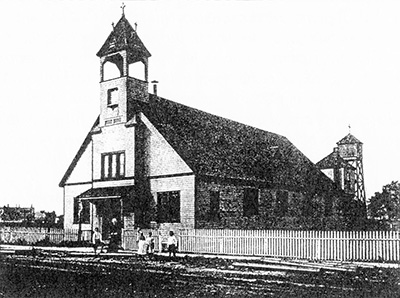
The original St. Matthew's Church
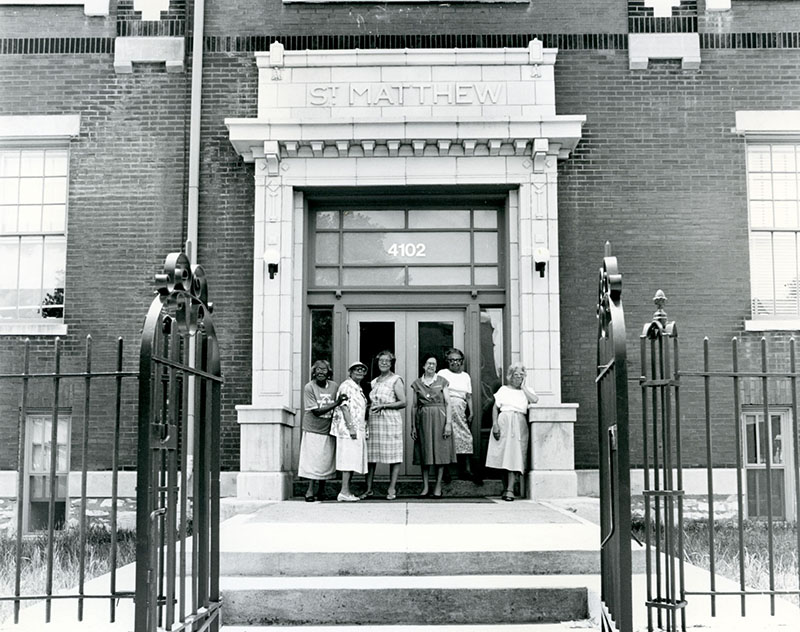
St. Matthew School
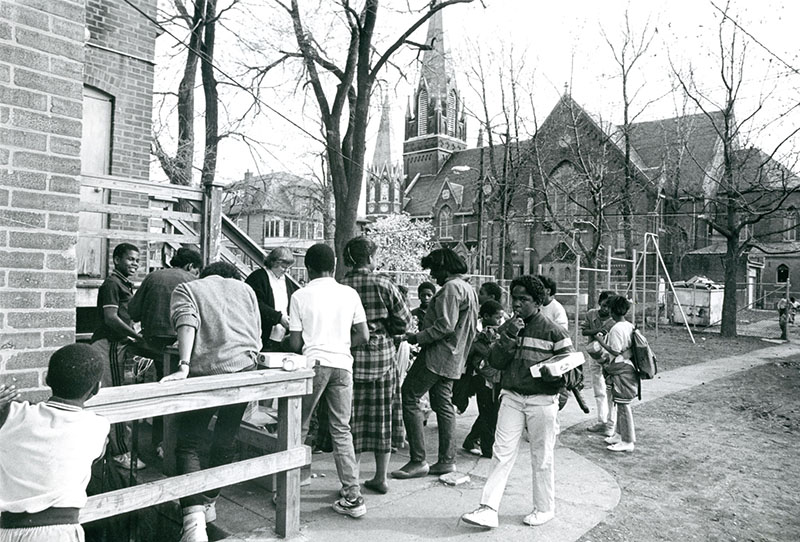
St. Matthew School Yard with Church
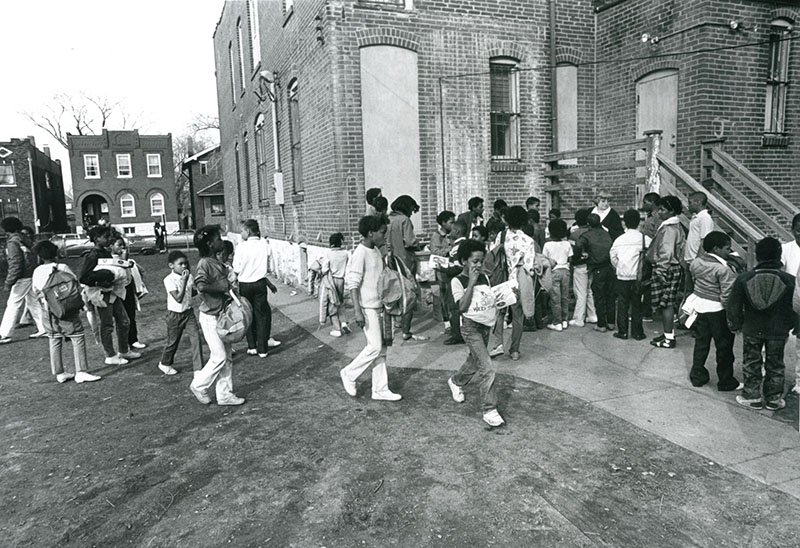
Recess at St. Matthew School
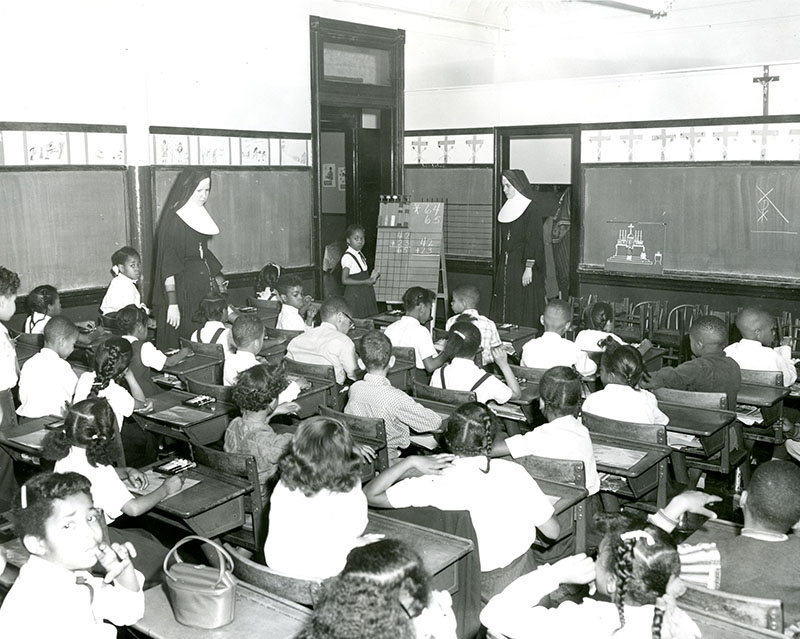
Classroom Scene in St. Matthew School
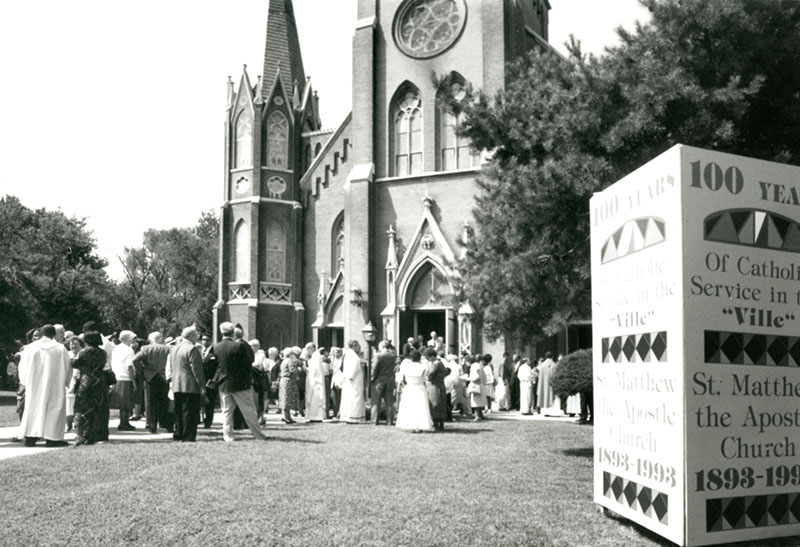
100 Year Celebration of the Parish 1993